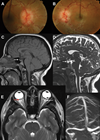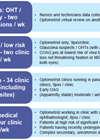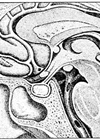Optic nerve swelling – your survival guide (part 1)
Assessment of optic nerve appearance and functions is a daily routine in neuro-ophthalmology. Following a recent high profile court case there has been a significant increase in the amount of referral to ophthalmology departments to assess the optic nerve and...
You want to do paediatric ophthalmology? Seriously?
Completion of Core Training is approaching fast and you begin to wonder three things. One, where do you want to live? Two, is anyone going to be retiring there soon? Three, what subspecialty do you want to do? In an...
Emerging developments in dry eye
An estimated 344 million people worldwide suffer from dry eye [1]. This chronic syndrome is characterised by a vicious cycle of tear film hyperosmolarity, tear instability and corneal stress, leading to increased friction, inflammation, ocular surface damage and decreased visual...
An update on idiopathic intracranial hypertension
The incidence of Idiopathic intracranial hypertension (IIH) is increasing, likely in line with the worldwide epidemic of obesity. To date, there have been revisions in the terminology used and diagnostic criteria for IIH; these recognise the need to exclude secondary...
Learnings and trends in the management of open-angle and angle-closure glaucoma
To be truly disruptive, newer technologies need to offer a quality of life benefit over medication to a broad population of glaucoma sufferers. Evidence and converging trends in medical and surgical management of glaucoma were explored in counterpoint discussions and...
Pituitary tumours: why are they so often missed?
Part 2: Clinical varieties, anatomical considerations and case report (see also Part 1 and Part 3) For ophthalmologists there are four types of pituitary tumour to be considered, three of which are named according to the hormone secreted, along with...








